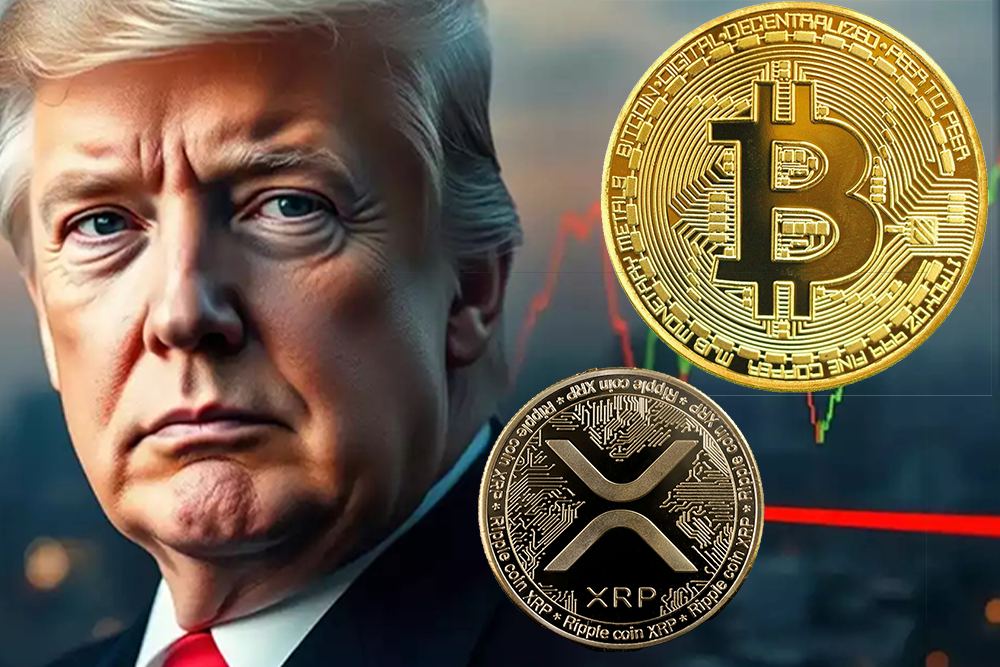Donald Trump’s 2024 presidential win is expected to have a significant impact on the cryptocurrency space, with notable implications for both Bitcoin and XRP. Trump’s administration has signaled a clear pro-crypto stance, suggesting that the U.S. could become a global hub for cryptocurrency innovation and adoption. His vision includes reducing regulatory hurdles and even establishing a “strategic Bitcoin reserve,” potentially boosting investor confidence in the U.S. crypto market. This shift in tone reflects Trump’s evolving view of Bitcoin: while he previously criticized it, he now appears to appreciate its strategic and economic potential.
Trump’s stance on cryptocurrency regulation could bring a much-needed shift in how the U.S. government approaches crypto-assets. His administration may prioritize removing Gary Gensler from the SEC or reducing his influence, a move that many in the crypto industry believe could lead to a more favorable regulatory environment for assets like Bitcoin and XRP. This would also open the door to new crypto-focused financial products, such as altcoin ETFs, which are currently in limbo under the existing SEC framework.

For XRP and other altcoins, Trump’s regulatory support could be transformative. Given the SEC’s previous scrutiny of XRP, a more open-minded regulatory approach under Trump could facilitate greater adoption and investment in Ripple’s cross-border payment technology, enhancing its role in international finance. The potential for a pro-crypto advisory council under Trump’s administration also promises to provide more informed and balanced oversight, which is likely to benefit the entire crypto ecosystem.
Overall, Trump’s presidency could be a “rising tide” for the crypto market, attracting both institutional and retail investments as confidence in the regulatory environment grows. His leadership could help position the U.S. as a leader in digital assets, fostering innovation and potentially raising the value of Bitcoin and altcoins like XRP as investors see the U.S. embracing these technologies strategically. This approach could, over time, propel the value of both Bitcoin and XRP, aligning well with Trump’s agenda to bolster the U.S. economy and financial dominance globally.
Bitcoin has evolved from being a niche digital currency into a major player in the global financial landscape, with a range of potential uses and directions on the horizon. Here’s a look at some key ways Bitcoin is being utilized and where it may be headed:
1. Digital Store of Value (“Digital Gold”)
Bitcoin is often seen as a “digital gold” because it has become a way for people to preserve value over the long term, especially in regions with economic instability or high inflation. Its decentralized nature means it is not controlled by any government or central bank, making it appealing as a hedge against traditional financial systems and inflationary pressures. This perception is growing as institutional investors and companies increasingly add Bitcoin to their balance sheets.
2. Medium of Exchange
While Bitcoin’s high volatility has sometimes limited its use as a day-to-day currency, it is still being used for transactions, especially in certain parts of the world. In countries like El Salvador, where it is legal tender, Bitcoin is used as a currency alongside the U.S. dollar. Lightning Network, a second-layer scaling solution, is also helping Bitcoin become more feasible for small, everyday transactions by enabling faster and cheaper transfers.
3. Cross-Border Payments and Remittances
Bitcoin’s ability to facilitate cross-border transactions at lower costs is highly appealing in the world of remittances. Many people in developing countries rely on remittances from family members abroad. Bitcoin allows for cheaper and quicker international money transfers, avoiding traditional banking fees and delays. This function is especially valuable in regions with limited access to reliable banking.
4. Financial Sovereignty and Decentralized Finance (DeFi)
Bitcoin offers individuals a form of financial sovereignty that bypasses traditional financial institutions. For people in regions with limited access to banking, Bitcoin provides a decentralized way to save and transfer value. It has also inspired the broader Decentralized Finance (DeFi) movement, though most DeFi applications run on other blockchains, such as Ethereum. As Bitcoin’s ecosystem evolves, some developers are working on “wrapped” Bitcoin (WBTC) for DeFi use, extending Bitcoin’s influence into this rapidly growing area.
5. Bitcoin as a Foundation for Future Technological Layers
Bitcoin’s blockchain is simple and stable, and as a result, many developers are exploring ways to build layers on top of it. The Lightning Network, as mentioned earlier, is an example of a layer-2 solution that allows faster transactions. More sophisticated layers, like RSK, are exploring ways to introduce smart contract capabilities to Bitcoin, opening the door for more complex decentralized applications to run on the network.
6. Asset Tokenization and Blockchain Innovation
Bitcoin has helped inspire the development of tokenized assets, where real-world assets like real estate, stocks, or commodities are represented as tokens on a blockchain. Although most tokenization projects are happening on other blockchains, Bitcoin’s secure infrastructure and its influence on the crypto ecosystem may indirectly contribute to the adoption and acceptance of tokenization as a financial innovation.
Future Directions for Bitcoin:
• Increased Institutional Adoption: More institutional investment and adoption by large corporations could drive further acceptance of Bitcoin. ETFs and other Bitcoin-linked financial products are being explored, which would offer traditional investors more straightforward exposure to Bitcoin.
• Stronger Regulatory Frameworks: As governments worldwide develop regulations for digital assets, Bitcoin may gain further legitimacy. Regulatory clarity could encourage more individuals and institutions to use it, though it may also introduce new challenges and restrictions.
• Environmental Sustainability: The high energy consumption of Bitcoin mining has sparked a global debate about environmental impact. Efforts to use renewable energy in Bitcoin mining are growing, with companies and mining pools increasingly exploring green solutions. Improved energy efficiency could play a role in sustaining Bitcoin’s growth and public acceptance.
Bitcoin’s journey is still evolving, but its potential to reshape finance and expand the concept of decentralized value storage and transfer seems certain to grow in the years to come. As technology and global markets progress, Bitcoin will likely continue to be at the forefront of financial innovation.
Sources:
• Cointelegraph, on Trump’s regulatory approach
• Wired, on Trump’s strategic Bitcoin reserve proposal


